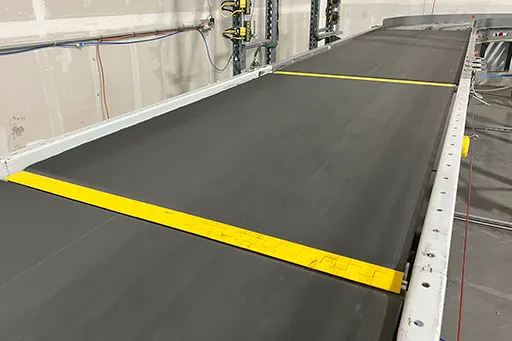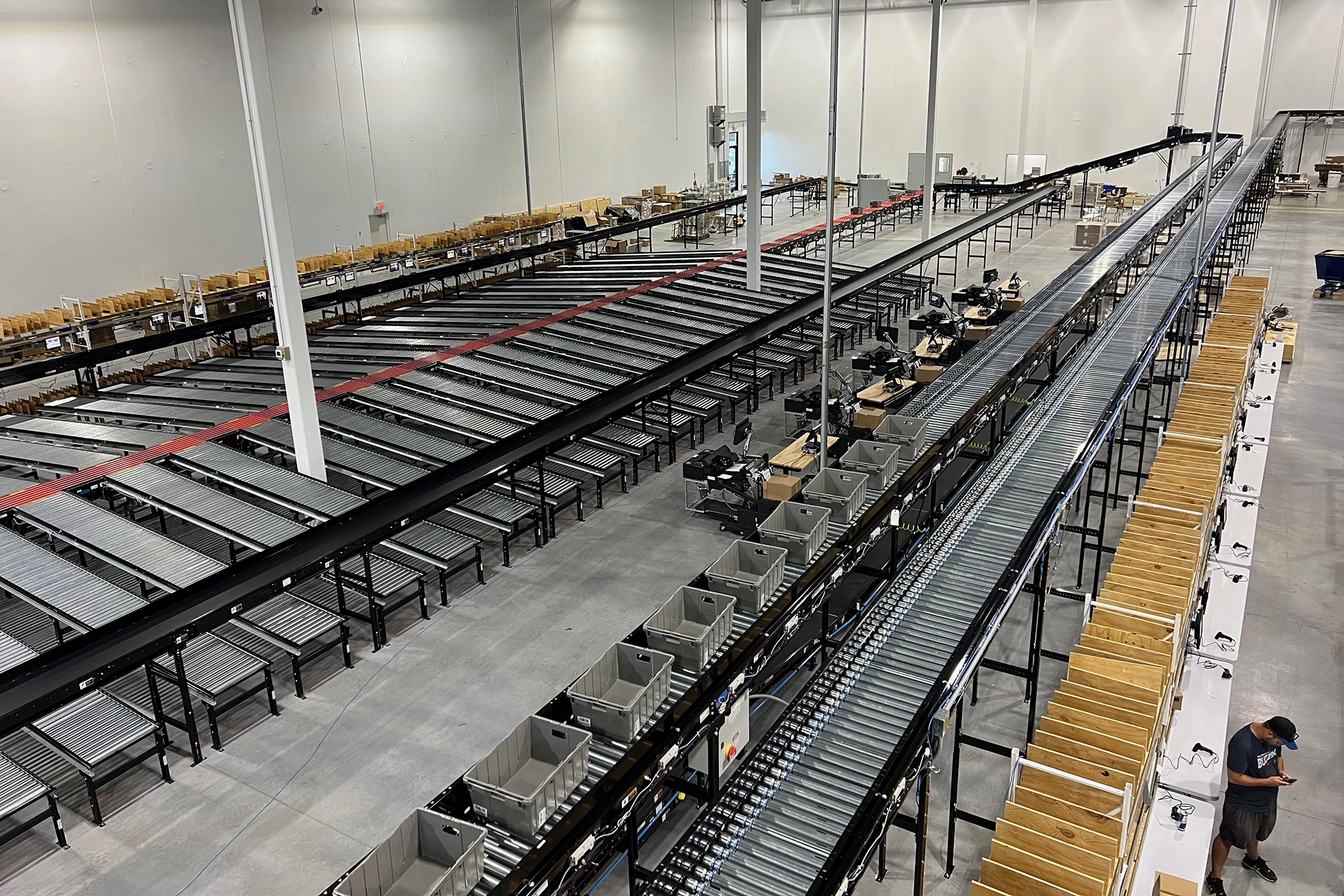Transportation Conveyor Overview
Transportation conveyors play a vital role in the automation process of warehouses and distribution centers. The main function of transportation conveyor systems is to transport or move products or goods from one location to another efficiently and safely, maximizing productivity and eliminating problem areas.
Typically belt or live roller, transportation conveyor utilizes no accumulation features, making it the most cost-effective way to move product throughout the warehouse.









